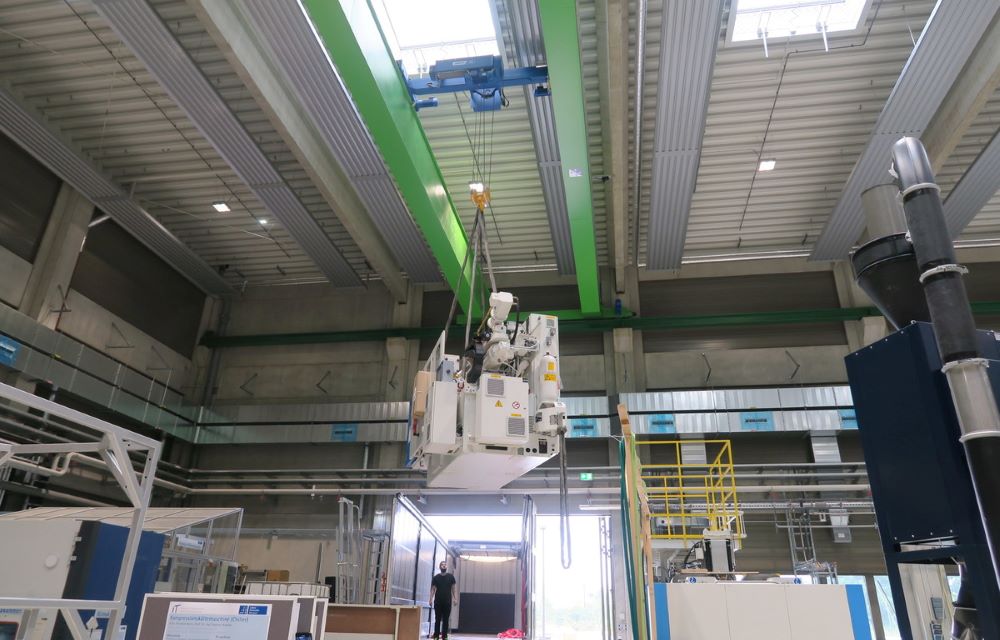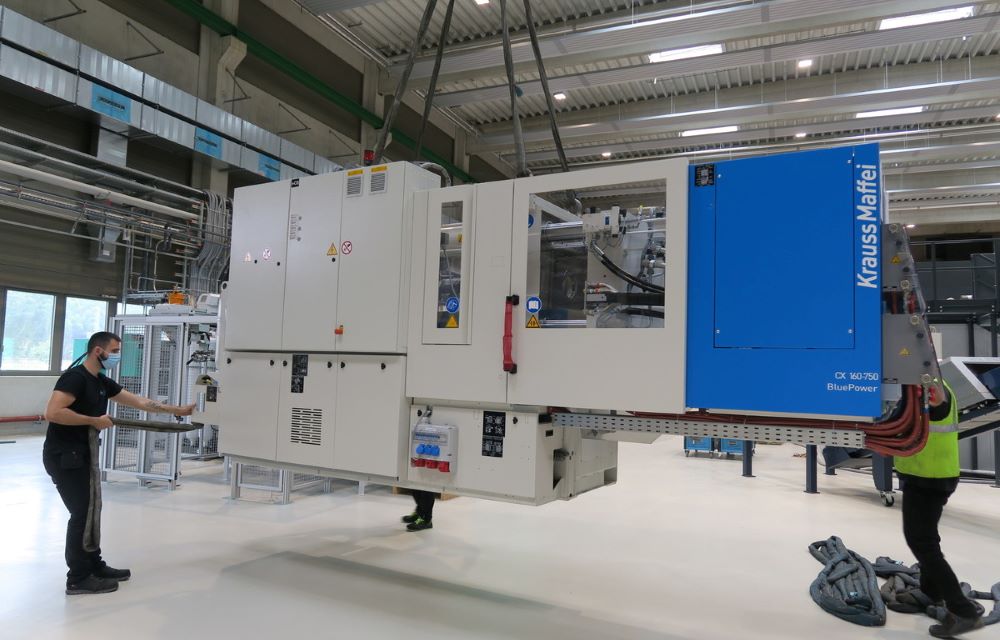This system enables injection molding and extrusion in one step. Placed on top of an injection molding machine is a “single-screw extruder with a high-performance compounding screw”. It ensures that the separate extrusion and granulation steps can be saved and that the material formulations can be varied in the injection molding process and test specimens as well as components can be produced directly. The melt, which is tailored in its composition, flows directly into the mold of the injection molding machine. The recipe can be adjusted practically inline. This optimizes processes in terms of time and energy.
Automated material mixtures
Various materials can be fed to the upstream extruder in precisely metered quantities via up to five dosing units and then mixed. The materials are composed, for example, of a base matrix or a recyclate plus various additives. The influence of additives for melt flow improvement or color masterbatches can also be examined directly on the basis of the resulting test components. Of course, a recyclate can also be mixed with virgin material; the only important thing is that the materials to be mixed have a certain chemical and thermal compatibility.
More efficiency through fewer process steps
Normally, after extrusion, the material has to be granulated, dried, packaged, transported and stored, and often dried again before further processing. DCIM can save these steps and the associated costs, as well as the additional thermomechanical material stress caused by remelting. Another advantage is that this results in very short optimization loops. The process has a particularly positive effect on smaller material quantities, such as those used in research.


